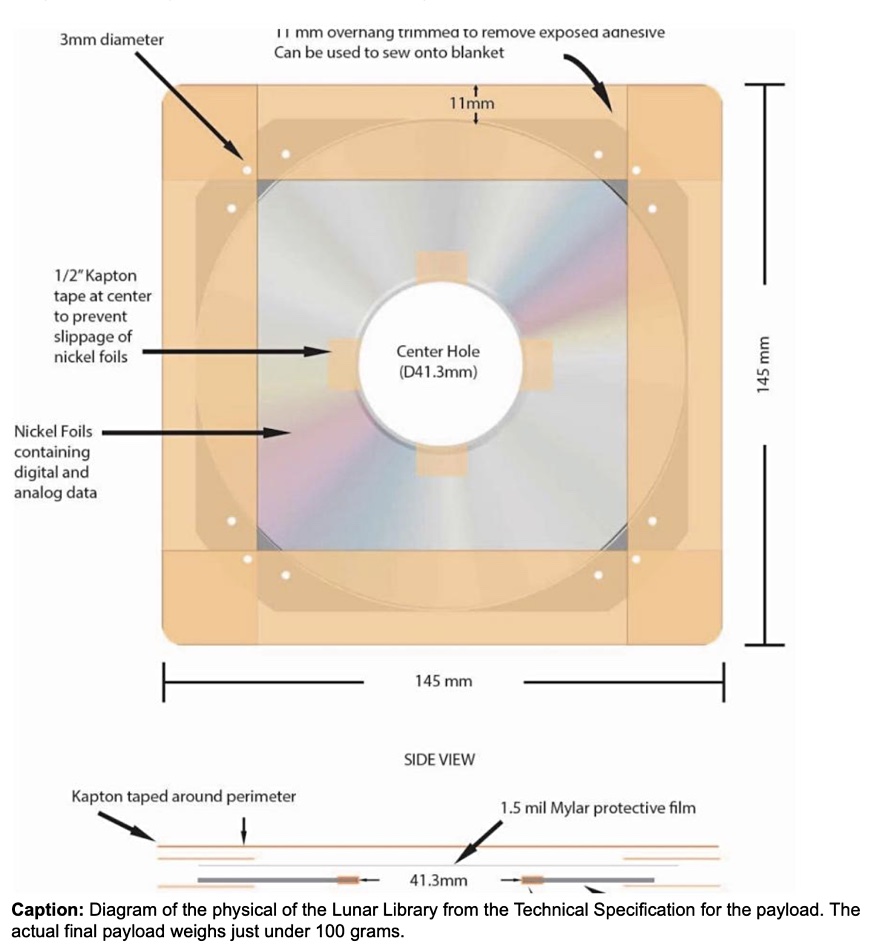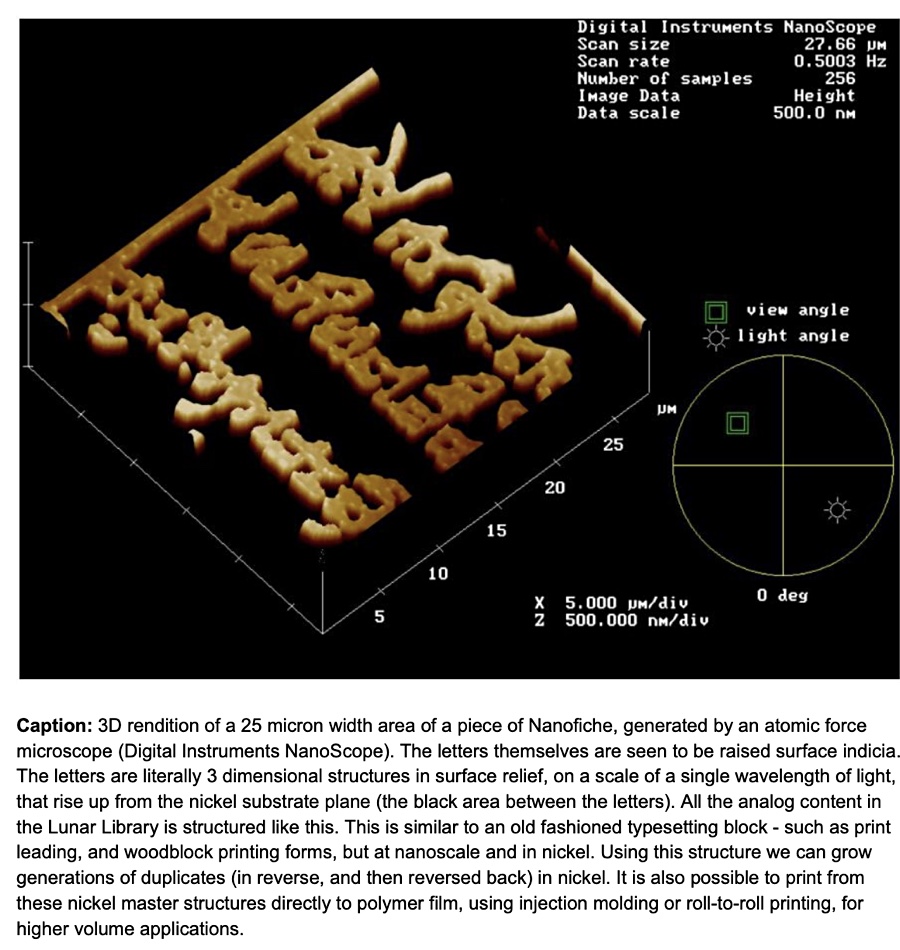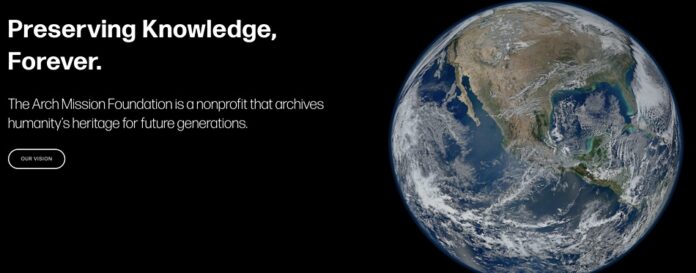There’s archiving and there’s archiving. The Arch Mission Foundation aims to archive data for billions of years as the memory of humanity.
We first came across it with the lunar library concept which involved putting a nickel-engraved 25-layer nanofiche on the Moon’s surface, in April 2019, courtesy of SpaceIL’s (Space Israel) Beresheet lander vehicle. An earlier gimmicky demo space library involved putting a 5-dimension optical disk in the glove compartment of a Tesla roadster car launched into an initial orbit round the Earth and subsequent elliptical one around the sun by Elon Musk’s SpaceX.
The Arch Mission Foundation (AMF) – with Arch being an abbreviation for archive pronounced “Ark” – intends to have libraries scattered around the solar system. Their knowledge content will be stored on etched nickel, read-only, nanofiche disks. The libraries function, in Arch’s high-faluting language, as a backup of planet Earth to preserve the knowledge and biology of our planet in a solar system-wide project called the Billion Year Archive. The nanofiche disks can theoretically endure for several billion years, since they are resistant to electrical, radiation, high heat, deep cold and many chemicals.
The language used by AMF sounds like the most portentous stuff imaginable: “Long after the Pyramids have turned to dust, and no matter what transpires on Earth, the Billion Year Archive will remain … humanity’s gift to the future.”
Arch has many advisors, amongst whom is the magician and entertainer David Copperfield – which seems a bit gimmicky in its own right.
The concept is based on having Arch library devices or “time capsules” placed in orbit around the Earth, at several locations on the Moon and elsewhere in the solar system.
The next scheduled lunar shot hitches a ride on the Astrobotic Peregrine Mission One lander, which was expected to land on the Moon in 2022. However, rocketry development being unreliable, Astrobotic pushed that back to May, 2023, and is now pushing it back to an unscheduled time in the future. This was due to a test anomaly – otherwise known as an explosion – nearby the testing rig that housed the United Launch Alliance (UAL) Vulcan Centaur rocket that should carry the lander to the Moon. The first flight is now delayed indefinitely as the rocket undergoes a design modification.
Nanofiche
The 4 gram, 120mm nanofiche disk is 40 microns (0.04mm) thick. It has 25-layers, or foils. The first four are analog layers with nearly 60,000 pages of content accessible by a simple magnifying glass or 100–200x optical microscope. The content includes technical and scientific specifications to teach a future reader how to retrieve and interpret the DVD-like digital data stored on the remaining 21 layers.

The first layers’ content also includes a primer consisting of thousands of pages that teach the meanings of more than a million words and concepts in many languages. It also includes collections of knowledge about many subject areas – such as the Wikipedia Vital Articles collection.

The content is first etched as nano-scale diffractives by laser onto a glass master disk at 300,000dpi. A thin nickel foil is grown from the glass master by electro-depositing the nickel atom-by-atom.The resulting foil is then separated from the glass. All this is carried out by NanoArchival at Stamper Technology.

The digital layers are physically the same but carry >100GB of compressed digital data (>200GB decompressed). The content includes the English Wikipedia, Project Gutenberg’s book library, the Internet Archive and the Wearable Rosetta; information on the world’s nearly 7,000 languages with the full PanLex dataset, and more.
Her’’s where it might be thought ridiculous. The digital content also includes special vaults – one of which is called David Copperfield’s Secrets, and explains the art and science of his illusions.
The idea is that far, far in the future, the then residents of Earth could discover the Arch time capsules in an archaeological exercise, build a DVD player using instructions in the nanofiche disk’s analog layers, and then retrieve the digital information. Also extra-terrestrial beings could do the same thing – and both find out all about David Copperfield.








